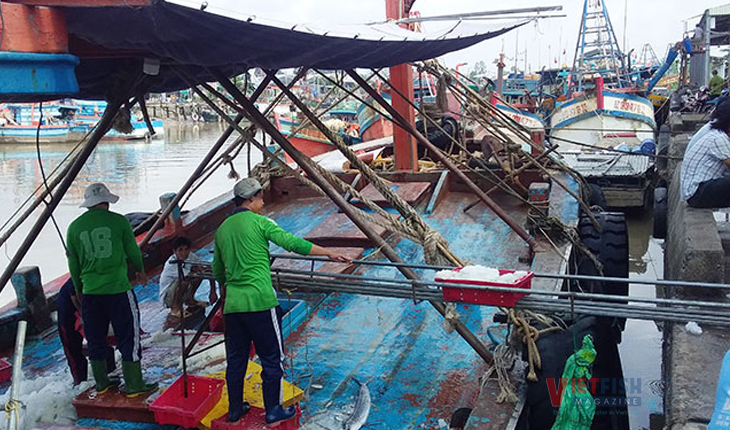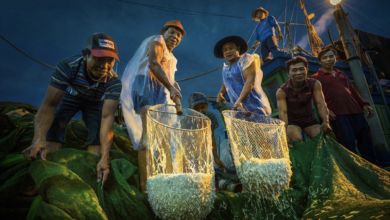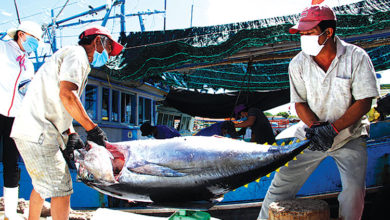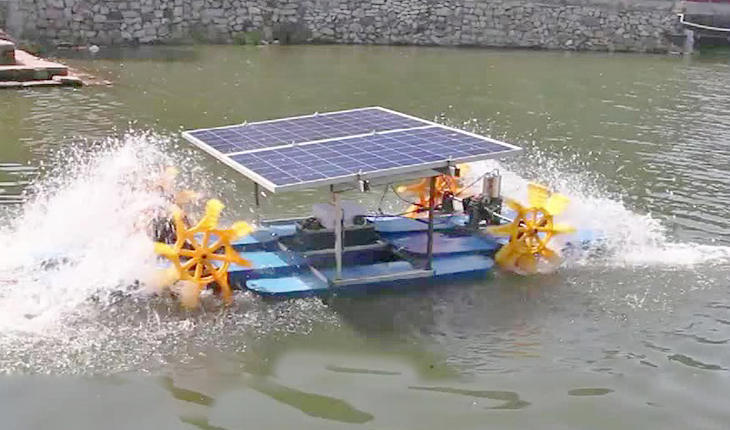Making sense out of the various raw materials used for manufacturing cage netting
When defining what cages to install in a farm, various factors must be taken into consideration. These factors include water depth, currents, water temperature, expected fouling accumulation, oxygen saturation, potential storm risk and more.
After considering the data and company policy it will be decided what dimension cages to be used and how many to install in a given area. Some companies prefer spreading the risk and labor on a larger number of smaller cages while other companies prefer farming in a lower number of large cages thus reducing operational costs.
Following the definition of the size and general structure of the cages, it will be part of the operations or farm managers’ job to decide the type of netting to use for the cage. Different types of netting may include twisted knotted, knotless Raschel, braided knotted or Muketsu twisted knotless netting. The decision on what type of netting to use will be influenced by the planned usage such as stage of growth of the fish, is the netting for predator or bird protection and more. Some of FISA’s customers have opted on using braided knotted polyester or HDPE braided Supra® for cages thus avoiding the necessity of using both an anti predator net and cage i.e. 2 for 1 solution.
Each of these types of netting have advantages and disadvantages and can be more or less adequate for each farm location conditions, design and operation procedures.
A second factor that must be considered is the raw material used when manufacturing the netting. This issue can be very tricky as there are a number of various materials available and not all manufacturers or net lofts offer the full range of materials thus their customers don’t always have access to the full range of available options.
FISA’s many years of experience have led the company to learn that there is no specific type of netting or raw material that is “better” than another. Each raw material has its advantages and disadvantages and the adequacy of each for any individual customer/farm depends on a number of factors.
For example, Ultra-high-molecular-weight polyethylene (UHMWPE) is a raw material that has the highest initial breaking load and is usually compared to the strength of steel. However, it is important to notice that this material also has extremely low elongation leading to a lower working load than would be expected. This issue is crucial in some types of fishing where elongation is critical and UHMWPE is less adequate but it could also be relevant when used in cages located in high current zones or open sea.
Also, one must consider that UHMWPE loses its tensile strength when twisted thus the breaking load that must be used when comparing with other raw materials is that of the actual netting and not of the UHMWPE filament.
On the other hand, what would seem to be the biggest advantage of UHMWPE is its light weight when compared to the other materials, allowing for easer handling and this can be very critical in the case of large cages.
When considering the potential accumulation of fouling, a factor that contributes to fouling concentration on netting is the number of filaments on the netting. UHMWPE has relatively low number of filaments when compared to nylon or polyester but is still a multifilament product thus it won’t be the most effective against fouling accumulation as compared to monofilaments product such as FISA’s SUPRA Advanced Fibers®.

It is important to mention that a good bonding or antifouling agent will help lower the fouling but this is an additional procedure and the number of filaments in the netting is a more root based solution.
Polyester does not have the highest initial breaking load but it does have relatively good elongation and more importantly, it is very resistant to abrasion and to U.V. rays. Thus after a relatively short period of time uses it will be much more work efficient than other materials and thus will have a longer lifespan.
On the other hand one must take into consideration that Polyester is around 16% heavier than Nylon making the cage slightly heavier for a similar initial working load. However, considering Polyester absorbs less water than nylon part of this effect is mitigated.
Nylon material is probably still the most common material used in aquaculture cages. This material has a slightly stronger initial breaking load when compared to Polyester and its elongation is also higher thus leading to a better working force. However, over time the effects of UV and abrasion can take its toll and after a couple years of use it might not have as good characteristics as a Polyester cage used under similar conditions.
If a company is considering using twisted knotted netting for its cages, it must take into account that one of the biggest advantages of Nylon over Polyester and UHMWPE is the loss of memory of the material thus leading to better adjusted knots.
An important consideration to take into account when using Nylon or Polyester netting is to make sure the manufacturer of the netting has pre-shrunk the material. If the netting has not been pre-shrunk, a process some manufactures skip in order to cut costs and accelerate the production speed, after a short period of usage the shape of the cage will change and will cause what would otherwise be unnecessary labor adjusting the size and shape of the cage.
As a reference, a preshrunk nylon cage could shrink an additional 4% to 7% while a nylon cage that did not go thru pre-shrinking process can shrink between 12% and 15% and not necessarily in an even way due to the fact that the netting used to build the cage is not all from the same production batch.
The above mentioned issues are quite complex and can be confusing. For that reason it is highly recommended to purchase cages from a net loft that provides direct and fluid communication with its netting supplier thus taking advantage of the full knowledge and experience of both the net loft and the netting manufacturer.
Additionally, it is best to have a netting manufacturer that offers a relatively full range of options to the type of netting and the raw materials used and won’t limit the customer’s options to a specific type of raw material or netting.
FISA






